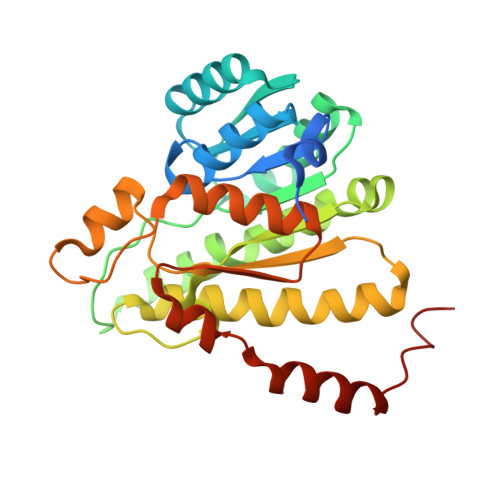Optimization of 1,2,4-Triazolopyridines as Inhibitors of Human 11 beta-Hydroxysteroid Dehydrogenase Type 1 (11 beta-HSD-1).
Li, J., Kennedy, L.J., Wang, H., Li, J.J., Walker, S.J., Hong, Z., O'Connor, S.P., Nayeem, A., Camac, D.M., Morin, P.E., Sheriff, S., Wang, M., Harper, T., Golla, R., Seethala, R., Harrity, T., Ponticiello, R.P., Morgan, N.N., Taylor, J.R., Zebo, R., Gordon, D.A., Robl, J.A.(2014) Bioorg Med Chem Lett 5: 803-808
- PubMed: 25050169
- DOI: https://doi.org/10.1021/ml500144h
- Primary Citation of Related Structures:
4IJU, 4IJV, 4IJW - PubMed Abstract:
Small alkyl groups and spirocyclic-aromatic rings directly attached to the left side and right side of the 1,2,4-triazolopyridines (TZP), respectively, were found to be potent and selective inhibitors of human 11β-hydroxysteroid dehydrogenase-type 1 (11β-HSD-1) enzyme. 3-(1-(4-Chlorophenyl)cyclopropyl)-8-cyclopropyl-[1,2,4]triazolo[4,3-a]pyridine (9f) was identified as a potent inhibitor of the 11β-HSD-1 enzyme with reduced Pregnane-X receptor (PXR) transactivation activity. The binding orientation of this TZP series was revealed by X-ray crystallography structure studies.
Organizational Affiliation:
Department of Medicinal Chemistry, Department of Biology, Lead Evaluation, CADD, Department of Pharmaceutical Candidate Optimization, Bristol-Myers Squibb , Bldg 13, Princeton, New Jersey 08543-5400, United States.

















